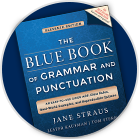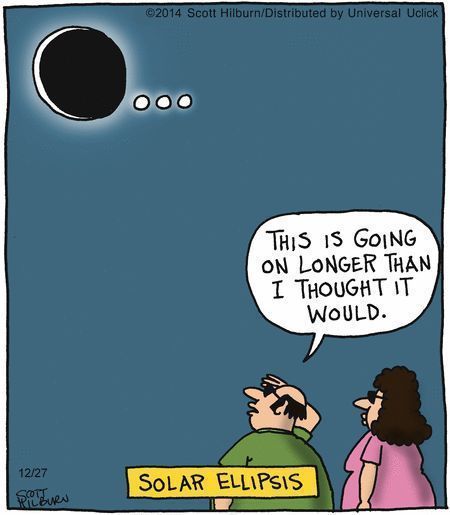|
Using Commas, Semicolons, and Colons Within Sentences
|
|
Two weeks ago we revisited the case of the lawsuit brought by a group of Maine dairy truck drivers that centered on the proper use of commas. Interestingly, the dispute was "resolved" through the use of semicolons (and cash). In light of that legal case, we thought it would be useful today to review the different functions served by these punctuation marks. The following article is one of Jane's earliest weekly e-newsletter articles, first issued on October 1, 2006.
Punctuation within sentences can be tricky; however, if you know just a few
of the following rules, you will be well on your way to becoming a polished
writer and proofreader.
Rule: Use a comma between two long independent clauses when conjunctions
such as and, or, but, for, nor connect them.
Example:
I have painted the entire house, but she is still working on sanding
the floors.
Rule: If the clauses are both short, you may omit the comma.
Example: I painted and he sanded.
Rule: If you have only one clause (one subject and verb pair), you
won’t usually need a comma in front of the conjunction.
Example: I have painted the house but still need to sand the floors.
This sentence has two verbs but only one subject, so it has only one
clause.
Rule: Use the semicolon if you have two independent clauses connected
without a conjunction.
Example: I have painted the house; I still need to sand the floors.
Rule: Also use the semicolon when you already have commas within a sentence
for smaller separations, and you need the semicolon to show bigger
separations.
Example:
We had a reunion with family from Salt Lake City, Utah; Los Angeles,
California; and Albany, New York.
Rule: A colon is used to introduce a second sentence that clarifies the
first sentence.
Example:
We have set this restriction: do your homework before watching
television.
Notice that the first word of the second sentence is not capitalized. If,
however, you have additional sentences following the sentence with the
colon and they explain the sentence prior to the colon, capitalize the
first word of all the sentences following the colon.
Rule: Use a colon to introduce a list when no introductory words like namely, for instance, i.e., e.g. precede the list.
Example: I need four paint colors: blue, gray, green, and red.
|
|
View this article on our website
|
|
Free BONUS Quiz for You!
[[firstname]], because you are a subscriber to the newsletter, you get access to one of the Subscribers-Only Quizzes. Click here to take a Semicolons and Colons Quiz and get your scores and explanations instantly!
We will be adding many more quizzes this year to our already substantial list of quizzes. If you have suggestions for topics we have not yet covered, please send us a message at help@grammarbook.com.
|
Hundreds of Additional Quizzes
at Your Fingertips
Subscribe now to receive hundreds of additional English usage quizzes not found anywhere else!
For Instructors and Employers, you may assign quizzes to your students and employees and have their scores tallied and organized automatically! Let GrammarBook.com take the hassle out of teaching English!
"Fun to test my Skills"
"The explanations really help ... thanks!"
"I download the quizzes for my students who don't have computer access."
|

|
Don't need all the quizzes?
You can now purchase the same quizzes individually for ONLY 99¢ each.
Purchase yours here.
|
If you think you have found an error in a quiz, please email us at help@grammarbook.com
|
 |
The Blue Book of Grammar and Punctuation
by Jane Straus, Lester Kaufman, and Tom Stern |
The Authority on English Grammar! Eleventh Edition Now Available
An indispensable tool for busy professionals, teachers, students, homeschool families, editors, writers, and proofreaders.
Available in print AND as an e-Book! Over 2,000 copies are purchased every month!
The publisher of The Blue Book, Jossey-Bass, A Wiley brand, is offering a 35 percent discount for those of you who order the book through Wiley.com. Shipping and tax are not included. Simply go to bit.ly/1996hkA and use discount code E9X4A.
Offer expires December 31, 2018.
|
Wordplay

|
 |
English In A Snap:
68 One-Minute English Usage Videos FREE |
Learn all about who and whom, affect and effect, subjects and verbs, adjectives and adverbs, commas, semicolons, quotation marks, and much more by just sitting back and enjoying these easy-to-follow lessons. Tell your colleagues (and boss), children, teachers, and friends. Click here to watch.
|
|





